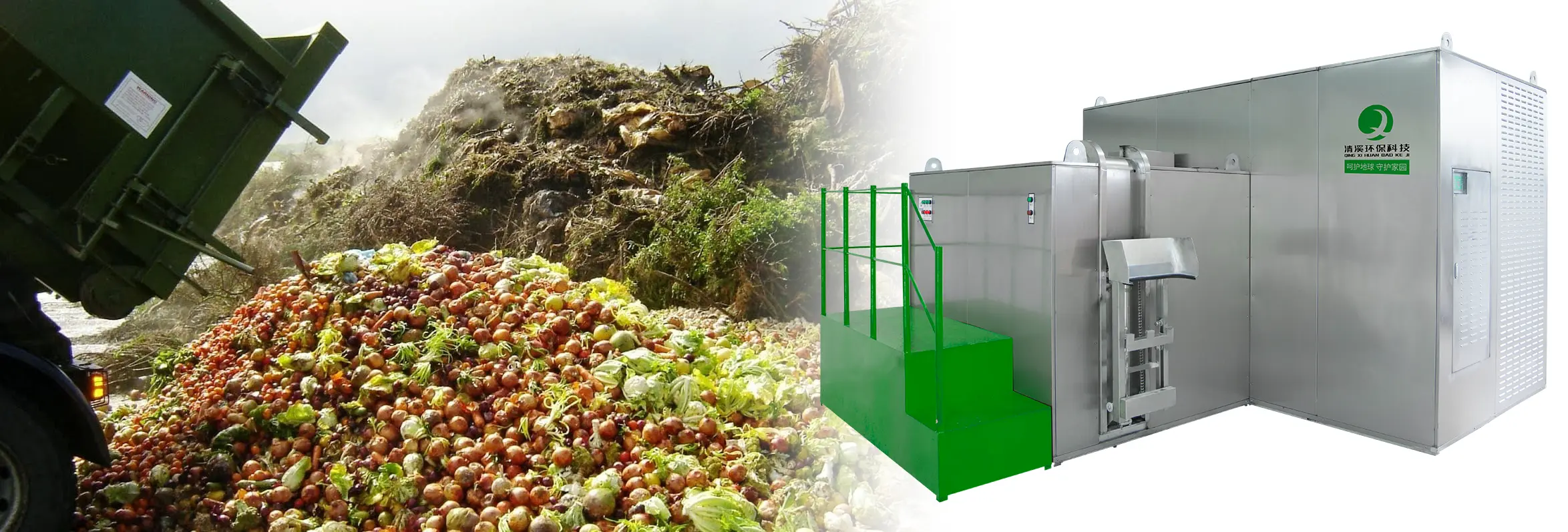Large-scale composting machines are revolutionizing organic waste management by converting tons of food scraps, agricultural residues, and municipal green waste into nutrient-rich compost efficiently. These industrial-grade systems are ideal for farms, food processing plants, cities, and waste management companies looking to reduce landfill dependency, cut costs, and support sustainability.
Creeks’ large scale composting machines are installed in businesses where food waste is produced – restaurants, hotels, hospitals, prisons, factories, food processing facilities, schools and institutions, gas and oil camps, military bases etc.
In China, Creeks can implement large scale composting facilities where the machines have a combined composting capacity of up to 50 tons per day.
Fruit and vegetable waste generated by nearby markets and food processing centres is picked up by the municipal waste hauling service and brought to the composting site.
At the composting facility, waste is emptied onto the sorting belt in which an operator screens the waste to remove non-organic objects. The material is then sent to a shredder before being emptied into the composting machine.
Creek’s proprietary microbes compost the waste in 24 hours, reducing volume by around 80-90%. The machine becomes full on a weekly basis, and compost is offloaded by operators.
Applications of Large-Scale Composting Machine
- Municipal Waste Management: Cities use large compost turners or in-vessel systems to process yard waste, food scraps, and sewage sludge, reducing landfill costs.
- Agriculture & Farming: Farms compost manure, crop residues, and agri-waste to create organic fertilizer, improving soil health.
- Food Processing Industries: Food factories, supermarkets, and restaurants dispose of tons of organic waste daily—composting machines help them meet sustainability goals.
- Landscaping & Horticulture: Large composting systems supply bulk compost for parks, golf courses, and nurseries.
How does a large-scale composting machine work?
A large-scale composting machine is designed to efficiently process organic waste (such as food scraps, agricultural residues, yard waste, and manure) into compost on an industrial level. These systems optimize decomposition by controlling aeration, moisture, and temperature to accelerate the breakdown of organic matter. Here’s how they work:
1. Waste Input & Shredding: Food waste is loaded into the machine (manually or via conveyor). A shredder or crusher chops the waste into small pieces for faster breakdown.
2. Microbial Decomposition: Natural microbes (bacteria, fungi) digest the waste. Some machines add bio-enzymes or inoculants to speed up the process. In electric composters, heaters (up to 60–80°C / 140–176°F) accelerate decomposition while killing pathogens.
3. Aeration & Mixing: Automatic mixers/tumblers stir the waste to provide oxygen (aerobic composting).
4. Moisture & Temperature Control: Ideal moisture: 40–60% (some machines add water or drain excess liquid). Sensors adjust conditions to optimize microbial activity.
5. Odor & Leachate Management: Carbon filters reduce smells.
6. Output: Compost or Dried Fertilizer. Fully automated machines produce compost in 24 hours.

